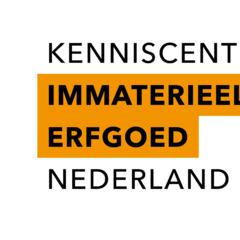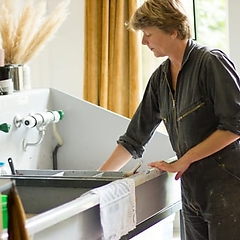Hedge laying is a craft. Hedgelayers make existing hedges, mainly thorn hedges, impenetrable for cattle and wildlife. Hedge laying is done in winter, when the shrubs are rather bare and easy to work with. Hedgelayers wear thick clothes and thick working gloves. They use various kinds of axes, chopping knives and pruning saws. First of all the hedge must be cleaned. Dead wood, waste and barbed wire must be removed. Then the branches of the shrubs are cut, but the branch may not be cut off or break. The cut must be so deep, that the branch can be laid down horizontally. Thus the hedgelayer is mainly busy cutting, laying and weaving. There are several weaving styles in the Netherlands. The style is partly determined by the type of shrub, the use or non-use of weaving material from elsewhere like wicker, and the placing of extra stakes. Laying a hedge must be periodically repeated. The period may vary from 6 to 25 years and depends partly on the style that is used.



